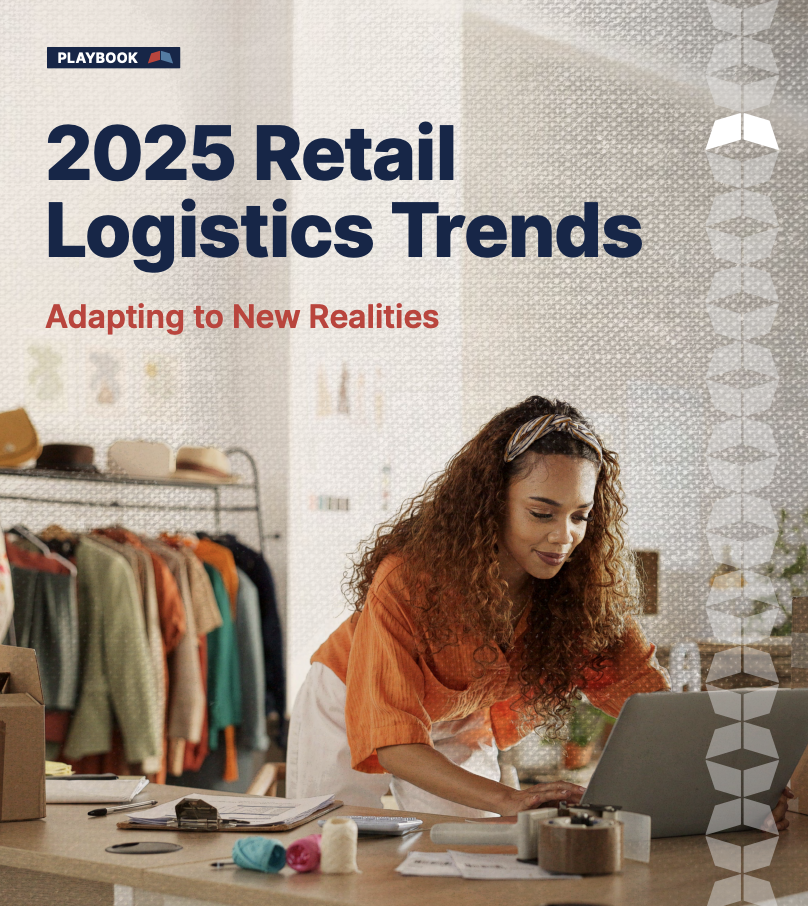The 2025 Retail Logistics Cost Crunch (And What Brands Can Do About It)
[This is an excerpt from WSI’s eBook 2025 Retail Logistics Trends: Adapting To New Realities]
Retailers in 2025 are operating in one of the most complex retail logistics environments we’ve seen in years. Inflation pressures, shifting trade rules, labor costs, and higher borrowing rates are colliding with evolving consumer expectations. The result? A landscape where every business decision carries higher stakes.
“2025 will be more challenging than years past,” explains K.B. Ng, a supply chain consultant and professor at George Brown College’s School of Management. “We face so many unfamiliar complexities and unknowns as a result of the current economy and a new administration, along with the potential for tariffs, and hence face inflation risks and reduced interest rate relief. These will significantly impact the flow of goods and the workforce, which ultimately impact consumer spending.”
For retailers, that means a simple truth: rising costs will squeeze margins, and how businesses respond will directly affect customer experience.
Five key factors that could drive up costs for brands and retail logistics providers
Several forces are converging to make 2025 an expensive year for both retailers and logistics providers:
Tariffs. Imports from China and various other major trading partners will be hit with tariffs, amplifying expenses for U.S. businesses that rely on imported goods to stock shelves.
Section 321 reform. Proposed changes to Section 321 de minimis rules could require more imported goods to go through customs, losing duty-free status. Retailers shipping DTC from outside the U.S. may now face taxes on goods previously exempt, impacting cross-border ecommerce with Canada, Mexico, China, and beyond.
Domestic Labor Expenses. Labor costs remain elevated across warehousing, distribution, and retail operations, tightening margins and leaving less room to absorb additional expense pressures.
Shipping Expenses. Shipping costs for ecommerce delivery are on the rise as major U.S. parcel carriers continue to hike rates.
Recovering Freight Market. As rates climb and carriers get out of cost-cutting mode, they may pursue investments in artificial intelligence (AI), automation, and visibility solutions to better adapt to future volatility and meet the demands of the retailers and shippers they serve. Unfortunately, such investments also mean that trucking companies will increase rates as they strive to cover their own rising costs. Other factors, like rising fuel costs and an ongoing trucking labor shortage, could contribute to higher rates and longer delivery times.
“These all result in a higher cost of doing business, especially for retailers exclusively selling online,” explains Sean Kim, Vice President of Ecommerce & Parcel at WSI. “Businesses will have to make the difficult decision on whether to pass increases on to the consumer or absorb them and erode margins.”
The ripple effect on consumers
When costs rise, consumers feel it…whether through higher prices, reduced promotions, or slower shipping. And they notice service gaps quickly. According to Qualtrics, 53% of consumers say a bad experience will cause them to spend less with a brand.
Shipping is a prime example. “The tracking experience from a trusted brand with a trusted carrier is much more important for many consumers than a faster shipping experience,” Kim explains. Many shoppers are even willing to pay for delivery when they feel confident in the reliability and transparency of the process.
This underscores a key point: brands cannot treat rising costs solely as an operational issue. Customer experience must remain central to every pricing and logistics decision.
How retailers can respond
Businesses must pay special attention to customer service as they consider how to manage rising costs associated with regulatory changes. How a brand handles increased tariffs and Section 321 reform will directly impact customer relationships.
These changes can cause seismic shifts in purchasing decisions if shoppers find items suddenly priced higher or unavailable altogether.
Consider shipping as an example: “The tracking experience from a trusted brand with a trusted carrier is much more important for many consumers than a faster shipping experience,” says Kim. “We’re even seeing a rise in consumers willing to pay for shipping to a certain point from brands they like and trust.”
While retailers can’t control the economy, they can take proactive steps to soften the impact:
- Adopt a multi-node fulfillment network to reduce long-zone shipments and bring inventory closer to customers.
- Invest in demand planning solutions to improve forecasting and avoid excess stock or costly stockouts.
- Negotiate long-term contracts with carriers to secure more predictable rates.
- Leverage 3PL partnerships for carrier diversification, volume-based pricing, and proactive consulting on cost-saving strategies.
What to look for in a future-proof 3PL
Not all logistics partners are built to weather volatility. The right 3PL can help retailers absorb cost shocks and maintain a competitive edge even when conditions are uncertain. Here’s what to prioritize when evaluating partners:
Carrier relationships
A strong 3PL should have established carrier relationships and the shipment volume to negotiate favorable rates. This can help offset rising parcel and freight costs.
“Brands chasing the two-day delivery experience may now have to pay more to achieve this beyond a ground network,” says Kim. To guard against potential increases in shipping rates, brands can partner with a third-party logistics company to help offset rising shipping costs. “3PLs have the volume to negotiate deeper with carriers. A savvy 3PL will also be able to offer advice on changes happening that could impact their business and consult on economic solutions like inventory movement, carrier diversity and services.”
Technology and visibility
Look for providers that offer real-time tracking, automated order management, and data analytics. Visibility is critical to making fast, informed decisions when disruptions occur.
Flexible, scalable network
The ability to tap into multiple nodes across regions helps shorten delivery times and reduce shipping expenses, especially as carriers adjust service standards. Whether demand spikes from seasonality or new channel growth, a future-proof 3PL should flex capacity and provide options…not force rigid commitments.
Download the full Retail Logistics Trends Playbook here.

About the Author

Mary Berko
Mary Berko is a creative content marketing manager focused on ecommerce and logistics. She was previously the senior marketing manager at Whiplash, Ryder, and CLI Studios. Her content has covered e-commerce marketing, fulfillment, logistics, arts education, and dance.



